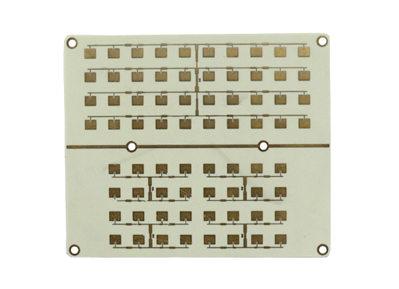High frequency PCB (Printed Circuit Board) is a type of circuit board specifically designed to handle high-frequency signals, typically in the radio frequency (RF) and microwave frequency ranges. These boards are engineered to minimize signal loss, impedance mismatch, and electromagnetic interference (EMI) that can occur at high frequencies.

Here are some key features and considerations of high frequency PCBs:
Material: High frequency PCBs are often made using specialized materials with excellent electrical properties, such as PTFE (Polytetrafluoroethylene) or ceramic-filled laminates. These materials have low dielectric constants and low loss tangents, allowing for efficient signal propagation at high frequencies.
Layer Stackup: High frequency PCBs usually have a controlled layer stackup with dedicated signal and ground planes. Multiple layers are used to provide better control of impedance and minimize crosstalk between signal traces.
Impedance Control: Maintaining consistent impedance is crucial for high frequency signals. PCBs for high frequency applications often employ controlled impedance routing, where the trace widths, spacing, and dielectric properties are precisely calculated to match the desired impedance.
Grounding and Shielding: Proper grounding and shielding techniques are implemented to minimize noise and EMI. Ground planes are strategically placed to provide a low impedance return path for signals and to shield against external interference.
Component Placement: Component placement is carefully planned to minimize signal path lengths and reduce parasitic capacitance and inductance. This helps maintain signal integrity and reduce losses.
Via Design: Vias play a critical role in high frequency PCBs. Through-hole vias, microvias, or buried vias are used to maintain controlled impedance and reduce signal reflections.
Thermal Management: High frequency circuits can generate heat, and efficient thermal management is necessary to prevent overheating. Heat dissipation techniques such as thermal vias and heat sinks may be employed.
High frequency PCBs are commonly used in applications such as wireless communication systems, radar systems, satellite systems, high-speed data transmission, and microwave devices. The design and manufacturing of high frequency PCBs require specialized expertise and careful consideration of signal integrity, impedance control, and EMI mitigation to ensure optimal performance at high frequencies.
Get more knowledge about What is a high frequency PCB please refer to Rigaopcb:https://www.rigaopcb.com/